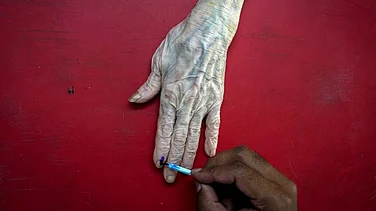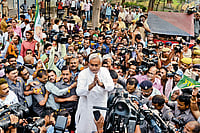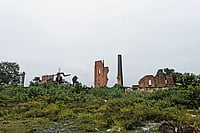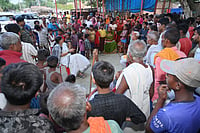Finally, Chief Minister Nitish Kumar-led Bihar government has let the cat out of the bag. On the occasion of Gandhi Jayanti this year, the Bihar government released the head count data of 209 castes. The last caste census was conducted during the colonial period, in 1931, when India was undivided. Till now, experts and the media had been using that year’s data for their reports. But now as the latest official figures have emerged, it is believed that the caste data will envisage new political forces in Bihar which will change the current political scenario.
According to the report, backward classes (BCs) and extremely backward castes (EBCs)—which together form the other backward classes (OBCs)—have emerged as the biggest caste groups. The total population of BCs is 27.31 per cent and the population of EBCs is 36.1 per cent. Both BCs and EBCs together make up 63.41 per cent of the OBC population.
The population of upper castes, according to the latest data, is 15.52 per cent, which includes the forward castes of the Muslim community. If the upper castes of Muslims are removed, the population of Hindu upper castes is about 10 per cent.
Chief Minister Nitish Kumar, Rashtriya Janata Dal (RJD) supremo, Lalu Prasad Yadav, termed the caste survey a historical work and talked about bringing development plans based on these data. Janata Dal (United) (JDU) leader Neeraj Kumar told Outlook, “Chief Minister Nitish Kumar had a meeting with all parties on this data. The government will use this data at the policy level, and development policies will be initiated keeping in mind the caste data.” Caste data is going to be an important issue for the INDIA Alliance, which includes more than a dozen political parties, and this will be the central issue in the 2024 Lok Sabha elections.
Immediately after the release of the data, Congress leader and MP Rahul Gandhi again talked about the fewer backward class secretaries at the top level invoking the slogan ‘Jiski Jitni Sankhya Bhari, Uski Utni Hissedari’ (share in election tickets and in power on the basis of support), which was coined by the socialist icon Kanshi Ram during the Mandal era.
Will the Data Invoke Mandal 2.0?
The demand for caste census in Bihar was going on for quite some time. RJD leaders were first to demand for a caste census in Bihar. Later, when the JDU dumped the BJP and formed an alliance with the RJD in 2022, the process for a caste census intensified. Nitish Kumar and Tejashwi Yadav, along with other leaders, met Prime Minister Narendra Modi to demand a caste census across the country, but in vain.
This year, finally, the caste survey was started from April 15 this year, but a few NGOs and individuals approached the Patna High court and later filed a case against it in the Supreme Court, but their petitions were dismissed.
The caste census data shows that Yadavs constitute the largest number of OBCs in Bihar (14.26 per cent).
A majority of the Yadav population has been loyal to the RJD. The population of Kurmi and Kushwaha castes, which fall in the OBC category, are 2.87 per cent and 4.21 per cent respectively, which are considered to be JDU’s vote bank.
The population of EBCs, according to the data, is 36.1 per cent, which includes many small castes and are colloquially called ‘Pachpaniya’. Nitish Kumar has, for years, managed these castes in a better way, but in recent years the BJP has made a major dent.
The total population of OBCs, including BCs and EBCs is about 63 per cent, but at present, they are getting just 27 per cent reservation in government jobs. In such a situation, the RJD and the JDU will now strongly raise the demand for an increase in OBC reservation so that the Mandal politics of the 1990s can be revived, which brought OBC leaders to the national platform. Experts believe that this will strongly consolidate OBC voters towards socialist parties, and this may cost the prospects of the BJP in coming elections.
The scheduled castes (SC) population is 19.65 per cent and the scheduled tribe (ST) population is 1.68 per cent, according to the data. The SC votes are almost equally divided among the RJD, the BJP and the JDU. Though it seems to benefit socialist parties, the caste census figures are a bit mysterious and may give a new shape to future politics where a few separate blocs will emerge.
Caste-wise figures may also create problems for the RJD, which practices the politics of OBCs, especially Yadavs, because it has been giving preference to Yadavs—from the distribution of tickets to important posts in the parties.
Political analyst Mahendra Suman points out: “The RJD gets only 70 per cent votes of the Yadavs. In such a situation, if it wants to increase its vote bank, it will have to give preference to other small castes which fall under the OBC category, and this can be done only at the cost of Yadavs.” “But if this is done, the Yadav vote bank may disintegrate and scatter. Therefore, these figures have brought a challenge for the RJD,” says Suman.
When it comes to caste and politics, only a few castes find their place in discussions. In OBC politics, only Yadav, Kurmi and Kushwaha castes are mentioned. The numbers of other castes were not known, so there was no talk of their population and their representation.
But in this report, the head count has been released of other castes which were considered negligible. According to the data, Dusadh population stands at 5.31 per cent, Chamar population is 5.25 per cent, Musahar caste population is 3.08 per cent, Teli population is 2.81 per cent, Mallah population is 2.6 per cent and Dhanuk population is 2.13 per cent. They have now realised their bargaining power, so they will certainly demand for their political share.
“A new political configuration will emerge based on the population figures of smaller castes. If major political parties give them satisfactory representation, then it is fine, otherwise these castes will emerge as a separate political force,” says political analyst D M Diwakar. “So politics in the future is not going to be easy for mainstream parties. If they don’t give proper representation, it will impact their vote bank,” adds Diwakar.
Muslims: No Longer ‘Monolithic Homogeneous’
According to the new data, the Muslim population in Bihar is 17.7 per cent, who majorly vote for the RJD and the JDU. Importantly, the caste survey has released caste-wise data of Muslims as well. The population of upper caste Muslims (Seikh, Saiyed and Pathan) is only 4.79 per cent and the remaining 12.91 per cent population is of Pasmanda (Dalit) Muslims. In political discourse, Muslims have been seen as a monolithic society, but this data has broken this myth as well.
Politician and former Rajya Sabha MP, Ali Anwar, says, “We have been talking about Pasmanda Muslims from 1998, and since then we have been saying that Muslims are not ‘monolithic homogeneous’. But we did not have the data. Now we have the figures.” Anwar is the founder of the All India Pasmanda Muslim Mahaz and he has been demanding recognition of Pasmanda Muslims as a separate identity and exclusive welfare schemes for them for many years.
“Based on this data, we will strongly raise the demand for a political share as per the population of the Pasmanda Muslims. I think that the backward classes, Mahadalits and Pasmanda Muslims will remain at the centre of Indian politics for the next several decades,” he says. “Given the population of Pasmanda Muslims, the secular political parties must create Pasmanda units within parties and Pasmanda commissions,” he says.
Dilemma for the BJP
According to the data, upper castes Hindus constitute just about 10 per cent. Among these, the maximum population of 3.65 per cent is of Brahmins, 3.45 per cent of the population is of Rajputs and 2.86 per cent of the population is of Bhumihars.
Though, the upper castes have voted for the BJP, but their numbers are not enough to make the saffron party a formidable force on its own. Hence, the party will need votes of the OBCs, and that’s why local party leaders have not only welcomed the data, but have also claimed that they had initiated the caste census exercise. BJP leader and Rajya Sabha MP Sushil Modi has said that the decision of caste census survey was taken when the BJP was part of the coalition government in Bihar, so RJD leader Tejashwi Yadav should not claim credit for this.
For OBC votes, the BJP may try to play a different trick. “The caste survey data brings the focus back on the EBCs and the prevalence of caste among Muslims. For the BJP, it may provide the opportunity to reignite the Yadav-versus-non-Yadav dichotomy, whereas for Nitish Kumar, it may be a final chance to demonstrate his commitment to his well-cultivated constituency,” Awanish Kumar, consulting editor, Economic & Political Weekly wrote in an article titled Caste Survey in Bihar: A New Beginning?. The BJP had recently started an outreach for Pasmanda Muslims to divide the Muslim votes, but the head count data of Pasmanda Muslims such as Dhuniya, Momin and Surjapuri may go against BJP’s plan.
“On one hand, Modiji is talking about Pasmanda, but on the other hand, most of the victims of attacks by cow vigilantes are Pasmandas. Pasmanda people are attacked in the name of alleged conversion. Bilkis Bano, who was gang-raped was from the Pasmanda community,” says Anwar. “So, his intention is not good. He just wants to divide Muslims, but Pasmanda Muslims are secular so they will not fall prey,” he adds.
The data released on October 2 is just one part of the survey and it has already created so much fuss in the political corridors. The main part of the survey, which is socio-economic status, is yet to be released. It is believed that the Bihar government will table the socio-economic data in the winter session of the assembly. The socio-economic data, according to experts, may bring a tectonic shift in the state as well as in national politics.
(This appeared in the print as 'Caste Your News Vote')



























